Project Category: Civil
Join our presentation
Presentation begins at 9:30 a.m. and goes to 1:30 p.m. MT on April 5th.
Meeting ID: 943 5342 6589
Passcode: pm1
About our project
Built in 1988, the Smith Creek Crossing Bridge spans Smith Creek along the Mackenzie Valley Highway and connects Tulita, Norman Wells, Fort Simpson and Wrigley to the rest of the Northwest Territories. The highway and bridge currently operate for only 6 weeks a year beginning in late January; upwards of 150 vehicles use the road and structure per day during its operational season, including personal vehicles, freight trucks, and industrial vehicles involved in the resource extraction industry.
The bridge has been in regular service since 1988 and no longer meets modern highway design codes and regulations. This, along with its deteriorating condition has encouraged the Government of the Northwest Territories to commission a replacement all-season bridge
The primary areas of focus for the team are the Stakeholder Analysis and Consultation, and the Design Analysis and Recommendations. Stakeholders included the Government and other regulatory bodies, as well as the communities and local organizations who will be most impacted by the project. A consultation package was created for the GNWT covering the various aspects of the project, including community engagement strategies, concept design and planning, risk analysis, and preliminary project scheduling. The package also includes constraints considered in the project, methodology used, and pertinent background information.
For more information, please refer to the project website.
Meet our team members
Albert Wang
Alexandru Bunda
Bennett Dykstra
Hazel Jocson
Jivan Johal
Joel Simon
Yousif Shaker

Details about our design
HOW OUR DESIGN ADDRESSES PRACTICAL ISSUES
There were several constraints to be considered in this project for both the Stakeholder Consultation team as well as the Concept Design team.
Stakeholder interests were kept in mind every step of the way. This is seen through how initial engagement was used to refine the initial concept designs and address any concerns, and how these revised changes were reported back to the public for further consultation, detailed feedback, and engagement. After this, the final round of community meetings were to present the finalized designs that were to be sent to relevant regulatory authorities for project approval.
The Concept Design team used the project’s initial constraints of regulations and logistics to create the first conceptual designs. From there, additional constraints involving geotechnical, structural, and transportation aspects narrowed our scope, and other considerations helped iterate the design throughout the project, ultimately converging into our final design.
WHAT MAKES OUR DESIGN INNOVATIVE
Our solution involves two noteworthy innovations within its design. The potential additions of catch-basins for rainwater, and the inclusion of multiple loading paths.
- The catch-basins assist in preventing contamination of the creek from improper drainage of the bridge deck,
- Multiple loading paths reduce the direct weight onto the primary supportive members, which enables this design to have the capacity for larger loads.
WHAT MAKES OUR DESIGN SOLUTION EFFECTIVE
In creating our design solution, we ran multiple analyses of two distinct models to determine what would be the most effective solution. We came to the conclusion that while one design wasn’t superior to the other, we could incorporate advantageous elements from both in our final design – and created a beam based bridge.
Additionally, we discovered that we could re-use the existing abutments based on their good bill of health from the inspection report. Re-using these structures further reduces the amount of work required, while also reducing the cost of the project and aiding schedule reductions.
HOW WE VALIDATED OUR DESIGN SOLUTION
We evaluated our solution based on several criteria, while also weighing the benefits of the projects against its risks.
Both the Stakeholder Consultation team and the Concept Design team had a hand in creating the criteria that was used to evaluate the solution our team used. This criteria fell under the general goals of how it affected the local region environmentally, socially, and financially.
To summarize, this solution:
- Provided A Boost to the Local Economy
- The new bridge will provide jobs to local companies as an employment opportunity, and will also connect tourists to the region.
- Is Environmentally Friendly
- Newer materials will be more environmentally friendly. Increased climate change effects will be protected against, and monitoring to ensure the stream or surrounding area is not impacted negatively.
- Was Considered with Ample Consulting
- Stakeholders will be consulted and engaged throughout the project through documents (such as our survey) as well as a presentation, which will help us build the bridge that the communities need.
FEASIBILITY OF OUR DESIGN SOLUTION
Due to the remote location, one of the initial constraints that was identified was the logistical feasibility of the solution.
The highway is an unmarked gravel road that experiences elevation and alignment changes, and as such, the consideration for material transportation had to be made. Emphasis was given to designs and construction materials which presented the smallest possible volume. I.e., where smaller items could be transported to site and then assembled on-site. By doing so, smaller vehicles which could more easily navigate the road and region could be used. While this would result in potential cost increases, it was thought this would be offset by reduced mobilization and transportation costs.
Additionally, based on the site reports provided, it was determined that the existing abutments could be re-used for the upgraded structure (albeit with some strengthening and reinforcing). This would reduce the project timespan and cost; imperative for the road as the structure is the sole link between the communities to the rest of the region.
Partners and mentors
We want to thank the many people who helped us with this project. Our civil engineering professor Jacqueline Vera guided us through the process with patience and great advice. And, our consultation with the Government of the Northwest Territories was invaluable.
Our photo gallery
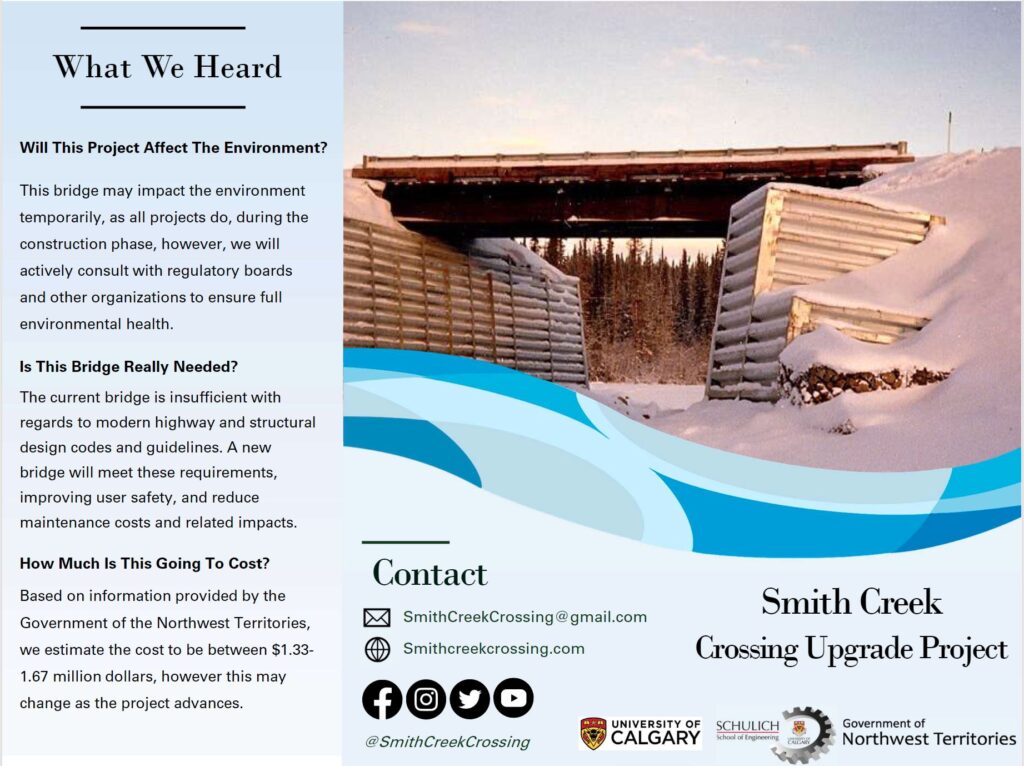

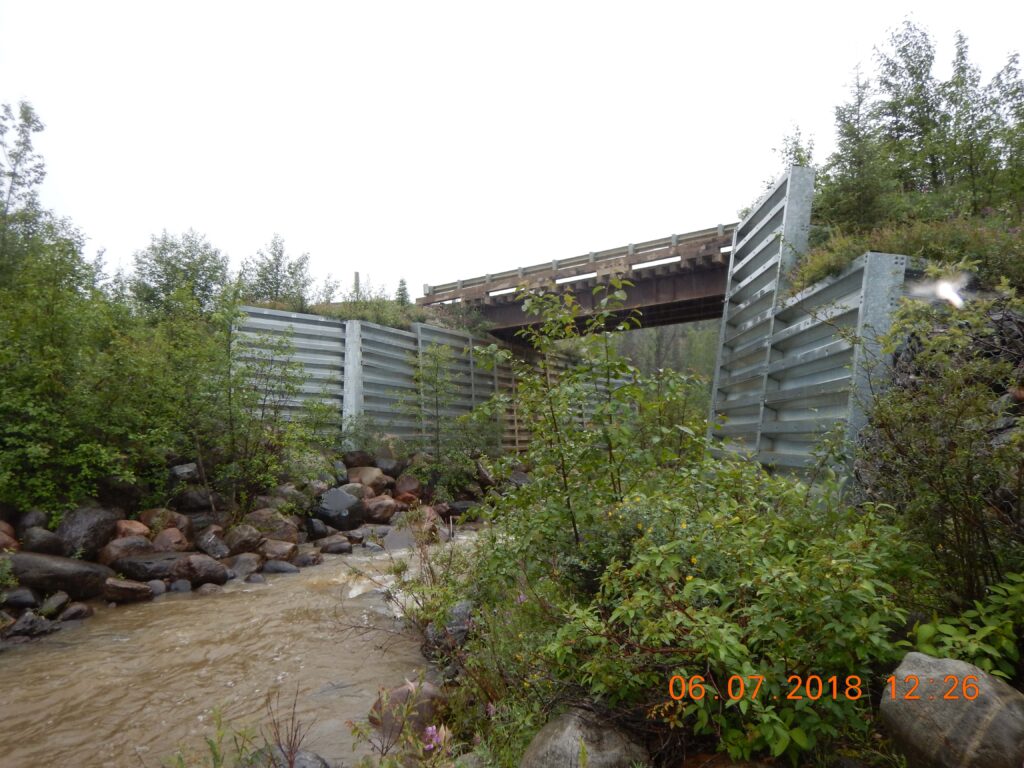
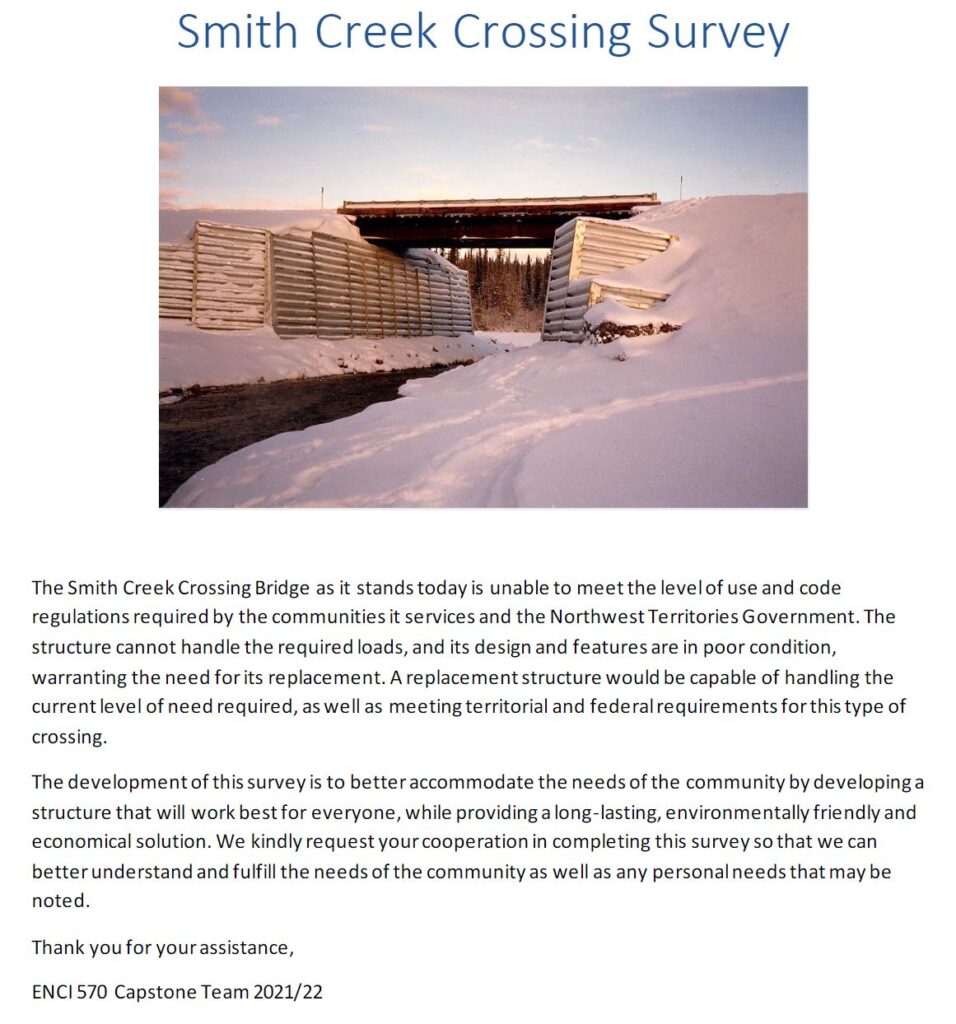
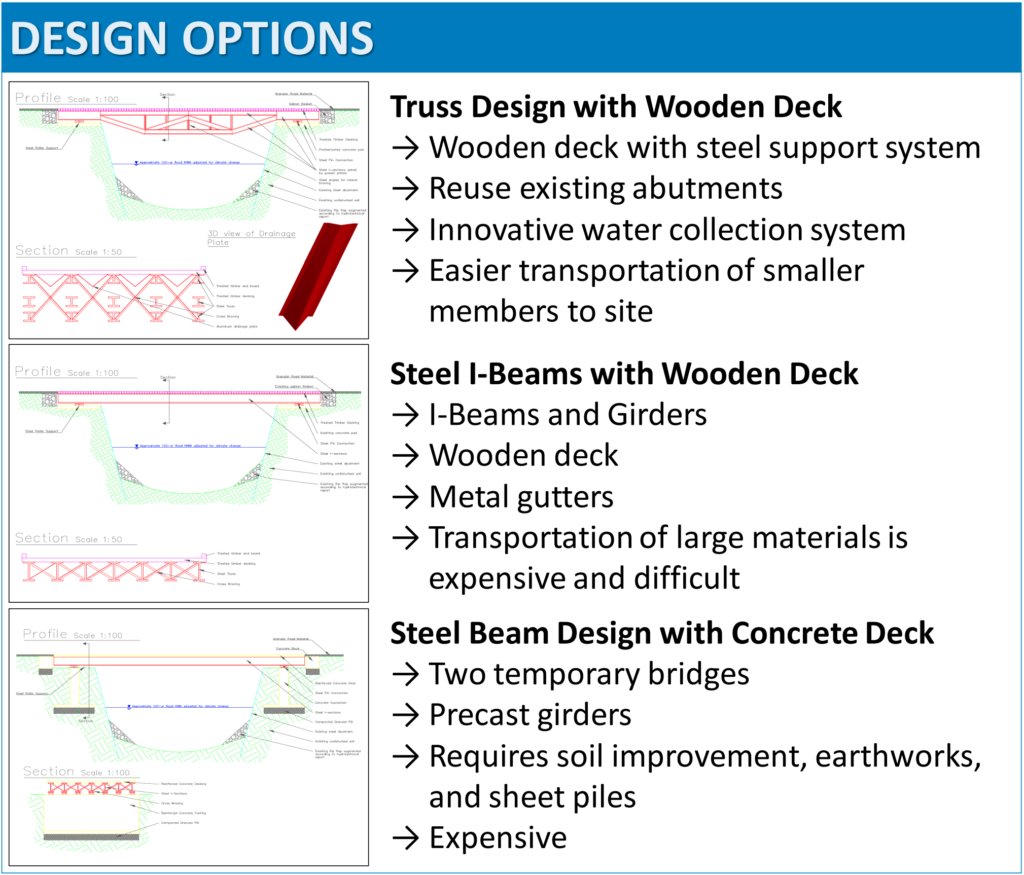
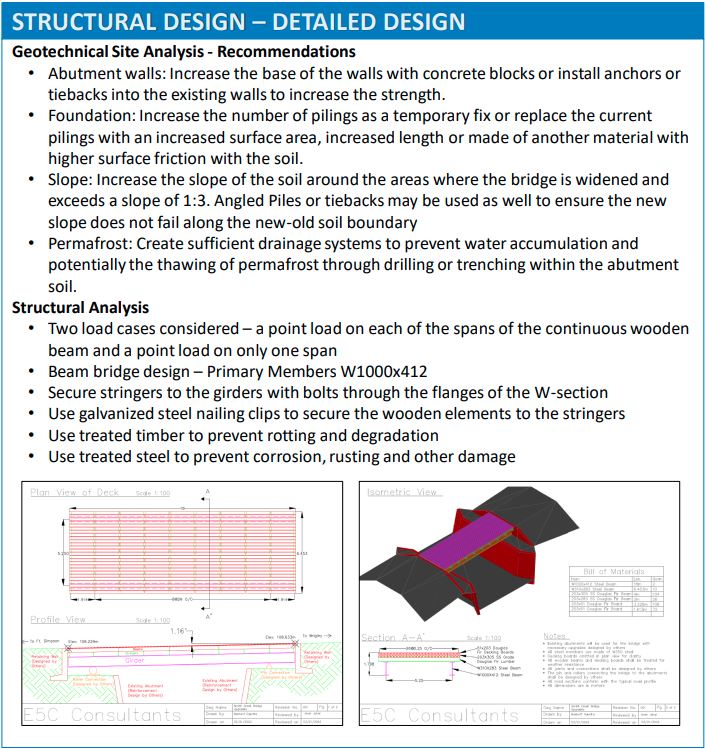
References
- HWY 1 km 687.2 Smith Creek Bridge Project Package – Government of the Northwest Territories;
- Engineering Guidelines and Codes – Canadian Highway Bridge Design Code; Canadian Foundation Engineering Manual; Standard Specifications for Bridge Construction, Alberta Transportation; Guide to Bridge Hydraulics TAC, Sustainability Considerations for Bridges Guide;
- Regulatory Bodies – Government of the Northwest Territories; Sahtu Land and Water Board; Mackenzie Valley Land and Water Board; Mackenzie Valley Environmental Impact Review Board.
